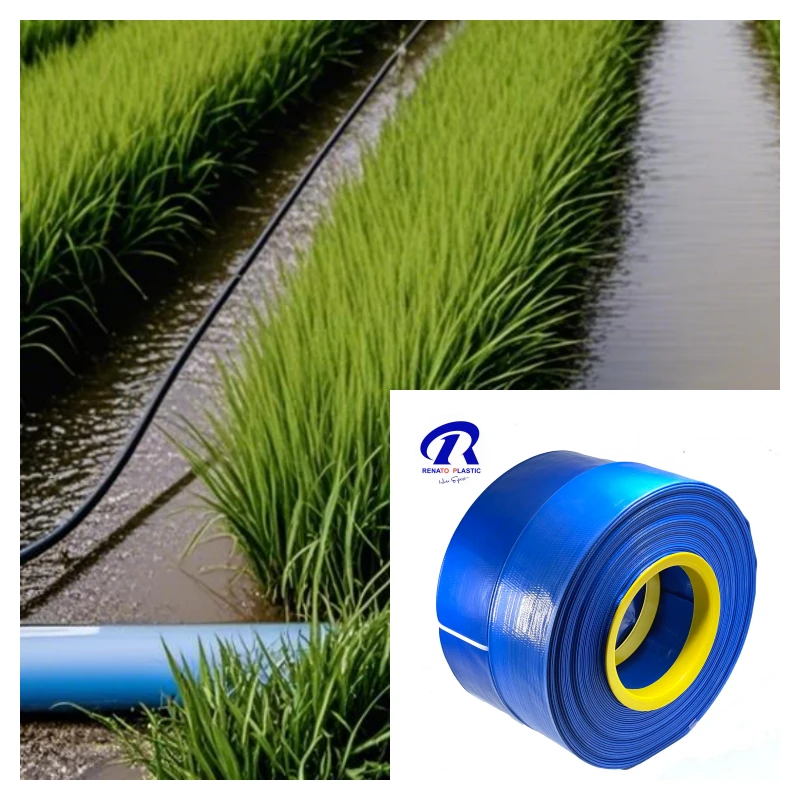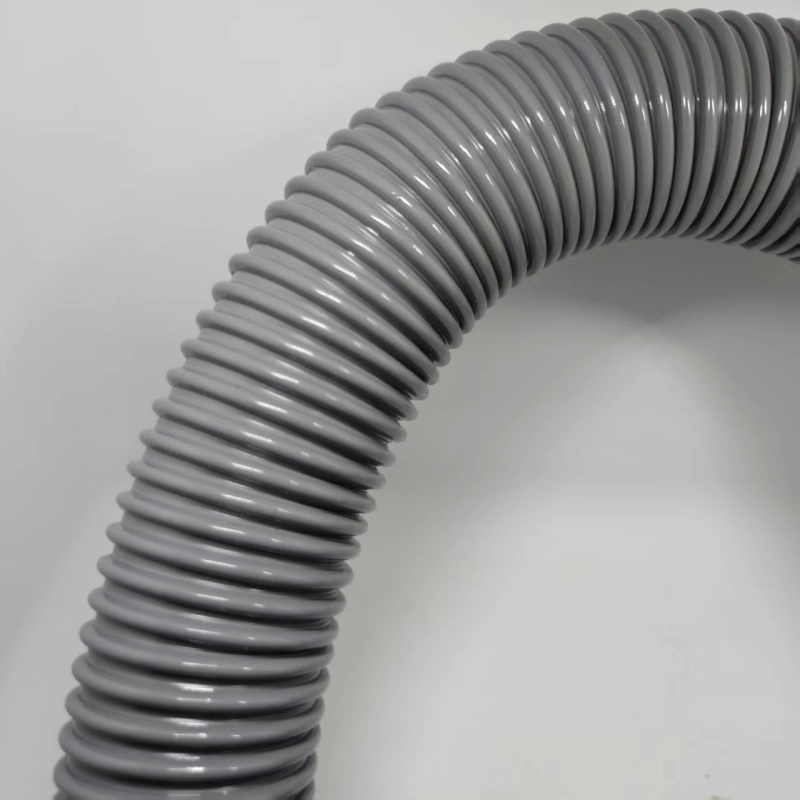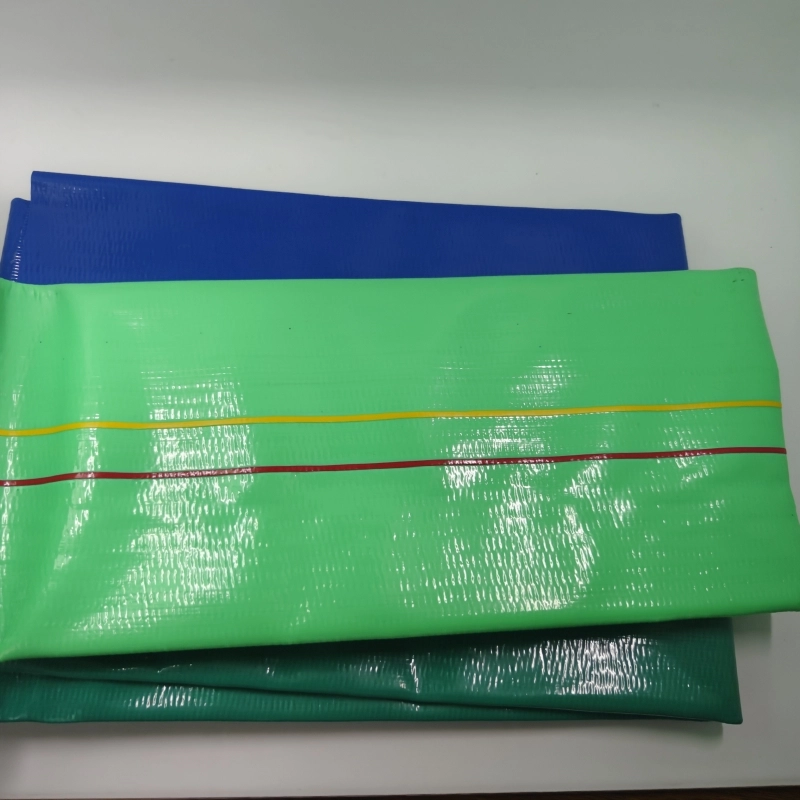PVC granules manufacturing process
Polyvinyl Chloride (PVC) is one of the most widely used plastics globally, known for its versatility and durability. It can be processed into various forms, including rigid and flexible products, through different manufacturing processes. One of the most common forms of PVC used in industries is PVC granules.
 granules Blue679.webp)
These granules are small, pellet-like materials that can be melted and molded into a wide range of products, from pipes and profiles to cables, sheets, and shoes. In this article, we will explore the specifications, formulation, and manufacturing process of PVC granules, including a detailed step-by-step explanation of how they are produced.
 granules Blue 2376363.webp)
Specifications of PVC Granules
PVC granules are categorized into different grades depending on their intended application, whether for rigid or flexible products. The specifications of PVC granules can vary based on their properties, including hardness, flexibility, and color.
| Specification | Details |
|---|---|
| Material | Polyvinyl Chloride (PVC) |
| Form | Granules or pellets |
| Hardness | Shore A 40 to Shore D 80 (customizable) |
| Color | White, black, or colored (customizable) |
| Density | 1.3 to 1.45 g/cm³ |
| Melting Point | 160°C to 210°C |
| Thermal Stability | 50 to 120 minutes (depending on the application) |
| Tensile Strength | 20 to 55 MPa |
| Elongation at Break | 200% to 450% (for flexible PVC) |
| Processing Temperature | 160°C to 200°C |
| Additives | Stabilizers, plasticizers, lubricants, pigments |
| Applications | Pipes, cables, profiles, sheets, footwear |
Formulation and Ratios
The formulation of PVC granules depends on the final product's requirements, whether the granules will be used for rigid or flexible applications. The formulation typically involves mixing PVC resin with various additives, including plasticizers, stabilizers, lubricants, pigments, and fillers. Here is a basic formulation breakdown for both rigid and flexible PVC granules.
1. Rigid PVC Granules
PVC Resin (K-Value 65–68): 100 parts
Thermal Stabilizers: 1–3 parts
Lubricants (Internal and External): 0.5–1 part
Impact Modifiers: 2–5 parts (optional)
Processing Aids: 1–2 parts
Pigments: As required (for color)
Fillers (Calcium Carbonate, etc.): 10–30 parts (optional for cost reduction)
2. Flexible PVC Granules
PVC Resin (K-Value 60–65): 100 parts
Plasticizers (DOP, DINP, DOTP, etc.): 40–80 parts
Thermal Stabilizers: 1–3 parts
Lubricants: 0.5–1 part
Pigments: As required (for color)
Fillers: 5–15 parts (optional)
The K-value of the PVC resin is a critical factor that determines its molecular weight and processing characteristics. A higher K-value indicates a higher molecular weight and better mechanical properties, but it also increases processing difficulty.
Manufacturing Process of PVC Granules
The production of PVC granules involves several steps, from compounding and mixing raw materials to pelletizing and cooling the final product. The process can be broken down into the following detailed steps:
1. Compounding
The production of PVC granules involves several steps, from compounding and mixing raw materials to pelletizing and cooling the final product. The process can be broken down into the following detailed steps:
he first step in manufacturing PVC granules is compounding, which involves blending PVC resin with the necessary additives. The additives enhance the properties of the PVC resin, such as flexibility, color, thermal stability, and processability.
Raw Material Preparation: The PVC resin and additives (plasticizers, stabilizers, pigments, etc.) are weighed according to the desired formulation. Precision is crucial to ensure consistency and product quality.
High-Speed Mixing: The materials are mixed together in a high-speed mixer, typically at temperatures between 100°C to 120°C. The heat generated during mixing helps to evenly distribute the additives and partially melts the resin, creating a homogeneous blend.
Cooling: After mixing, the compounded mixture is transferred to a cooling mixer to reduce the temperature to around 50°C to 60°C, preventing premature melting or agglomeration of the material before the next step.
2. Melt Extrusion
Once the compounding is complete, the PVC mixture is fed into an extruder for the next stage of processing.
Feeding the Extruder: The cooled PVC compound is fed into a twin-screw or single-screw extruder, where it is melted and homogenized. The extruder has multiple heating zones that gradually increase the temperature of the material to the desired processing temperature (typically 160°C to 200°C).
Plasticizing: Inside the extruder, the material is subjected to high pressure and temperature, causing it to melt and mix thoroughly. The screws inside the extruder continuously knead and push the material forward, ensuring a uniform melt.
Extrusion: Once the PVC compound is fully melted and mixed, it is extruded through a die to form a continuous strand of molten PVC. The size of the die opening determines the thickness and shape of the extruded material.
3. Pelletizing
After extrusion, the next step is to cut the molten PVC into granules or pellets.
Strand Cutting: The continuous strands of molten PVC exiting the extruder are immediately cooled in a water bath to solidify the material. Once solidified, the strands are fed into a pelletizer, which cuts them into small, uniform granules. The granules typically range from 2mm to 5mm in size, depending on the application.
Hot Die Face Cutting: In some processes, a hot die face cutter is used. In this method, the molten PVC is extruded through a die plate and cut into granules directly at the die face. The granules are then air-cooled or water-cooled, depending on the process requirements.
4. Cooling and Drying
After pelletizing, the granules need to be cooled and dried to remove any moisture picked up during the cutting or cooling stages.
Cooling: The granules are cooled using air or water to bring them to room temperature. This ensures that the granules do not stick together during packaging and storage.
Drying: In some cases, especially for granules exposed to water cooling, the material is passed through a drying unit to remove any residual moisture. Ensuring dry granules is crucial for consistent quality during later processing.
5. Screening
The next step is to screen the granules to remove any oversized or undersized particles. This ensures uniformity in granule size, which is important for consistent feeding and melting during the next stage of processing.
6. Packaging
Once the PVC granules have been cooled, dried, and screened, they are ready for packaging. Granules are typically packed in 25kg bags, but larger bulk orders may be supplied in 500kg to 1,000kg big bags for industrial applications.
Bagging: The granules are filled into bags, and the bags are sealed and labeled with information such as batch number, weight, and material grade.
Storage: The packaged granules are stored in a dry, cool area to prevent contamination or degradation before shipping to customers.
How to Use PVC Granules
PVC granules are easy to handle and process, making them ideal for a variety of applications. The granules can be melted and molded into different shapes using various plastic processing methods.
1. Injection Molding
PVC granules are commonly used in injection molding, a process where the granules are heated until they melt and then injected into a mold. This method is widely used for making products such as fittings, medical devices, and consumer goods.
Steps: The granules are fed into the hopper of an injection molding machine, melted, and injected into a mold cavity. The mold is then cooled, and the finished product is ejected.
2. Extrusion Molding
Extrusion is another common method for processing PVC granules. It is used to produce continuous shapes such as pipes, profiles, cables, and sheets.
Steps: The PVC granules are fed into an extruder, where they are melted and forced through a die to form the desired shape. The extruded product is then cooled and cut to the required length.
3. Blow Molding
Blow molding is used to produce hollow objects such as bottles and containers from PVC granules.
Steps: The granules are melted in an extruder, and the molten material is extruded into a tube (called a parison). The parison is then clamped into a mold, and air is blown into the tube, expanding it to fit the mold cavity. Once cooled, the product is ejected from the mold.
Lifespan of PVC Granules
The lifespan of products made from PVC granules can vary widely depending on their application and exposure to environmental factors.
Indoor Applications: For products used indoors, such as pipes, fittings, and profiles, PVC can last for decades without significant
Degradation: These products can have a lifespan of 50 years or more, depending on how well they are maintained and the conditions in which they are used.
Outdoor Applications: PVC products exposed to outdoor environments, such as window frames, cables, and outdoor pipes, are generally UV-resistant, but they may degrade over time if not properly stabilized. With UV stabilizers and protective coatings, outdoor PVC products can last 20 to 40 years.
High-Exposure Applications: In more extreme conditions, such as applications involving exposure to chemicals or extreme temperatures, the lifespan of PVC products may be shorter. However, when properly formulated with appropriate stabilizers and additives, PVC products can still offer 10 to 20 years of reliable service.
Conclusion
The manufacturing process of PVC granules involves several key stages, from compounding and extrusion to pelletizing and packaging. Each step is crucial to ensuring that the final product meets the specific requirements of the intended application, whether it’s for rigid or flexible products.
PVC granules are an incredibly versatile material that can be used in various industries, including construction, automotive, medical, and consumer goods. By adjusting the formulation, manufacturers can create granules that are optimized for specific uses, whether they require flexibility, hardness, or resistance to environmental factors.
Understanding the formulation ratios and the detailed steps involved in producing PVC granules is essential for anyone in the plastics industry. With proper handling, PVC granules can be transformed into durable, long-lasting products that meet the needs of a wide range of applications.


